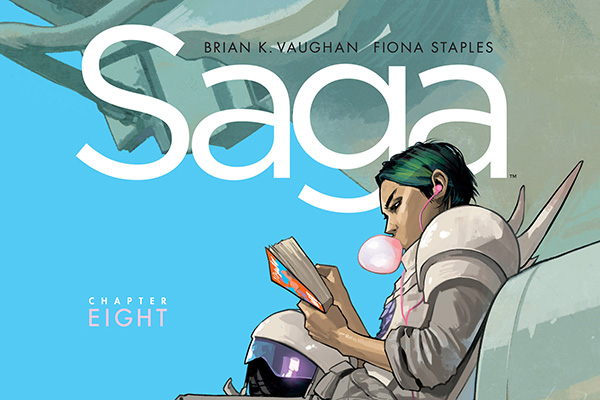Saga
By Brian Vaughan
ďYou decent in there, Slave Girl?Ē
ďAnything but, master.Ē
ďI taught her to say that. Anyway, have fun ÖĒ
I roll my eyes and turn the page, and thereís a six-year-old girl, looking scared and awkward. What the fucking fuck. So Saga unexpectedly dropped child prostitution on me, and after that I started taking it a bit more seriously. One of the best things about this volume is the way that things have consequences. Normally when youíve got empowerment fantasy, you donít want unpleasant realities messing up your plot Ė consider, for example, the inexhaustible supply of goons in every superhero story ever. So far, Sagaís going to admirable lengths in its mission to bring real consequences (emotional and physical) to bear on the characters. The real test now for Vaughan will be charting their emotional development over the course of the series. Itís a shock to discover child prostitution in a sci-fi/fantasy comic book, but now that itís in there, I want to see how this weighty issue affects and shapes the characters involved.
In terms of narrative structure, thereís about half a dozen main characters in three different places revolving around the same game of cat and mouse. Itís not desperately original, but Iím willing to sit back and see what Vaughan does with it. He spends most of the first volume playing with expectations of empowerment. Sure, some characters can fight off massive nasty creatures from the abyss; they can also get murdered by a bunch of thugs in a street fight Ė it mostly depends on who gets lucky. Thereís potential for battles to go either way, and thatís a significant plus. Characters arenít off-limits: they can die, and they do die. Itís not quite George R.R. Martin, because nobody is quite like George R.R. Martin, but itís heading in the same direction. The one difficulty that Saga encounters is that itís trying to depict an intergalactic conflict from the inside. The focus is on a series of individual characters, and the narrative never pulls back to display the supposedly breath-taking scale of the conflict. The two sides clash once or twice ďon-screenĒ but only briefly, and only as the background to the relationships between main characters. Thatís fine for something stylised, like Shakespeare or the opera, but Saga feels like itís trying for a realism vibe (at least as realistic as sci-fi/fantasy mash-ups get). Perhaps a grittier tone would have better suited the content, but it is only the first volume. Iíll be keeping a close eye on Saga to see how it develops.



